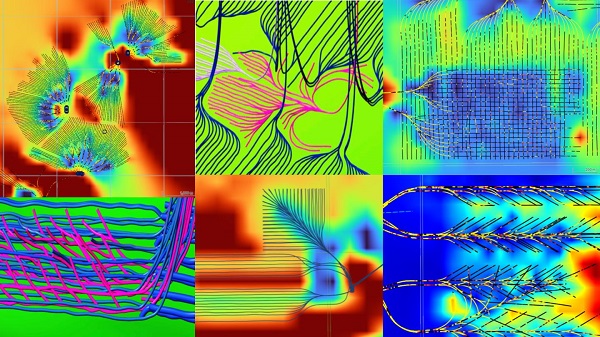Alberta
Debate continues over an Alberta pension plan—but here’s a key fact

From the Fraser Institute
By Tegan Hill
According to documents recently obtained by Postmedia, bureaucrats in Ontario’s Ministry of Finance believe the Smith government’s report released last year on an Alberta pension plan overstates what Alberta could withdraw from the Canada Pension Plan (CPP) to start its own plan. The report estimates that the province’s share of CPP assets is worth $334 billion, which is equal to 53 per cent of the CPP.
It’s not surprising that Ontario civil servants are debating this issue. If Alberta leaves the CPP and creates a provincial pension plan, the savings for Albertans would essentially cost workers in the rest of Canada (excluding Quebec, which already has its own standalone provincial pension). Given that Ontario is the second-largest net contributor to the CPP (behind only Alberta), those costs would fall heavily on Ontarians.
Albertans, like all workers outside Quebec, pay a basic mandatory CPP contribution rate of 9.9 per cent, typically every payday. According to the Smith government’s report, that rate would fall to 5.91 per cent for a new CPP-like provincial program for Albertans, which means each Albertan would save up to $2,850 in 2027 (the first year of the hypothetical Alberta plan). Critically, this lower contribution rate (i.e. tax) delivers the same benefit levels as the CPP.
Meanwhile, the basic CPP contribution rate for the rest of Canada (excluding Quebec) would increase to 10.36 per cent. In other words, smaller take-home paycheques for workers in the rest of Canada.
Currently, Albertans contribute disproportionately to the CPP and other national programs because the province has more workers (and less retirees) as a share of its population, higher employment rates and higher average earnings compared to the rest of Canada. In 2020, the latest year of available data, Albertans contributed about 16 per cent of total CPP contributions but received only 12 per cent of total CPP benefits.
And the federal legislation (Section 113(2) of the CPP Act), which governs the withdrawal of any province from the CPP and the asset distribution calculation, focuses on the amount paid into the fund by Albertans and the benefits paid out (taking into account investment returns and administrative costs).
Bureaucrats in Ontario, however, argue there are issues with the report’s interpretation of the formula. They claim, for example, that the asset distribution calculation fails to account for individuals who worked in Alberta but retired elsewhere. And regardless, they feel the formula should be updated. The Smith government has asked the federal government and investment board to respond to the report with its own interpretation and calculations.
While the debate about Alberta’s share of the CPP assets is sure to continue, it should not distract from the key fact that any reasonable split of CPP assets would result in lower contribution rates for Albertans and likely higher rates for the rest of Canada (excluding Quebec). If Alberta’s share of assets were less than half of what the government report estimates ($150 billion) in 2025, the contribution rate in Alberta would drop to 7.8 per cent, equal to an estimated $1,086 in savings annually per Albertan. Even if Alberta’s share of assets were just $120 billion in 2025, Alberta’s contribution rate would drop to 8.2 per cent and save approximately $836 annually per Albertan.
Clearly, Alberta’s withdrawal from the CPP would come with big savings in the province and increased costs in the rest of Canada.
Author:
Alberta
‘Weird and wonderful’ wells are boosting oil production in Alberta and Saskatchewan

From the Canadian Energy Centre
Multilateral designs lift more energy with a smaller environmental footprint
A “weird and wonderful” drilling innovation in Alberta is helping producers tap more oil and gas at lower cost and with less environmental impact.
With names like fishbone, fan, comb-over and stingray, “multilateral” wells turn a single wellbore from the surface into multiple horizontal legs underground.
“They do look spectacular, and they are making quite a bit of money for small companies, so there’s a lot of interest from investors,” said Calin Dragoie, vice-president of geoscience with Calgary-based Chinook Consulting Services.
Dragoie, who has extensively studied the use of multilateral wells, said the technology takes horizontal drilling — which itself revolutionized oil and gas production — to the next level.
“It’s something that was not invented in Canada, but was perfected here. And it’s something that I think in the next few years will be exported as a technology to other parts of the world,” he said.
Dragoie’s research found that in 2015 less than 10 per cent of metres drilled in Western Canada came from multilateral wells. By last year, that share had climbed to nearly 60 per cent.
Royalty incentives in Alberta have accelerated the trend, and Saskatchewan has introduced similar policy.
Multilaterals first emerged alongside horizontal drilling in the late 1990s and early 2000s, Dragoie said. But today’s multilaterals are longer, more complex and more productive.
The main play is in Alberta’s Marten Hills region, where producers are using multilaterals to produce shallow heavy oil.
Today’s average multilateral has about 7.5 horizontal legs from a single surface location, up from four or six just a few years ago, Dragoie said.
One record-setting well in Alberta drilled by Tamarack Valley Energy in 2023 features 11 legs stretching two miles each, for a total subsurface reach of 33 kilometres — the longest well in Canada.
By accessing large volumes of oil and gas from a single surface pad, multilaterals reduce land impact by a factor of five to ten compared to conventional wells, he said.
The designs save money by skipping casing strings and cement in each leg, and production is amplified as a result of increased reservoir contact.
Here are examples of multilateral well design. Images courtesy Chinook Consulting Services.
Parallel
Fishbone
Fan
Waffle
Stingray
Frankenwells
Alberta
Alberta to protect three pro-family laws by invoking notwithstanding clause

From LifeSiteNews
Premier Danielle Smith said her government will use a constitutional tool to defend a ban on transgender surgery for minors and stopping men from competing in women’s sports.
Alberta Premier Danielle Smith said her government will use a rare constitutional tool, the notwithstanding clause, to ensure three bills passed this year — a ban on transgender surgery for minors, stopping men from competing in women’s sports, and protecting kids from extreme aspects of the LGBT agenda — stand and remain law after legal attacks from extremist activists.
Smith’s United Conservative Party (UCP) government stated that it will utilize a new law, Bill 9, to ensure that laws passed last year remain in effect.
“Children deserve the opportunity to grow into adulthood before making life-altering decisions about their gender and fertility,” Smith said in a press release sent to LifeSiteNews and other media outlets yesterday.
“By invoking the notwithstanding clause, we’re ensuring that laws safeguarding children’s health, education and safety cannot be undone – and that parents are fully involved in the major decisions affecting their children’s lives. That is what Albertans expect, and that is what this government will unapologetically defend.”
Alberta Justice Minister and Attorney General Mickey Amery said that the laws passed last year are what Albertans voted for in the last election.
“These laws reflect an overwhelming majority of Albertans, and it is our responsibility to ensure that they will not be overturned or further delayed by activists in the courts,” he noted.
“The notwithstanding clause reinforces democratic accountability by keeping decisions in the hands of those elected by Albertans. By invoking it, we are providing certainty that these protections will remain in place and that families can move forward with clarity and confidence.”
The Smith government said the notwithstanding clause will apply to the following pieces of legislation:
-
Bill 26, the Health Statutes Amendment Act, 2024, prohibits both gender reassignment surgery for children under 18 and the provision of puberty blockers and hormone treatments for the purpose of gender reassignment to children under 16.
-
Bill 27, the Education Amendment Act, 2024, requires schools to obtain parental consent when a student under 16 years of age wishes to change his or her name or pronouns for reasons related to the student’s gender identity, and requires parental opt-in consent to teaching on gender identity, sexual orientation or human sexuality.
-
Bill 29, the Fairness and Safety in Sport Act, requires the governing bodies of amateur competitive sports in Alberta to implement policies that limit participation in women’s and girls’ sports to those who were born female.”
Bill 26 was passed in December of 2024, and it amends the Health Act to “prohibit regulated health professionals from performing sex reassignment surgeries on minors.”
As reported by LifeSiteNews, pro-LGBT activist groups, with the support of Alberta’s opposition New Democratic Party (NDP), have tried to stop the bill via lawsuits. It prompted the Smith government to appeal a court injunction earlier this year blocking the province’s ban on transgender surgeries and drugs for gender-confused minors.
Last year, Smith’s government also passed Bill 27, a law banning schools from hiding a child’s pronoun changes at school that will help protect kids from the extreme aspects of the LGBT agenda.
Bill 27 will also empower the education minister to, in effect, stop the spread of extreme forms of pro-LGBT ideology or anything else to be allowed to be taught in schools via third parties.
Bill 29, which became law last December, bans gender-confused men from competing in women’s sports, the first legislation of its kind in Canada. The law applies to all school boards, universities, and provincial sports organizations.
Alberta’s notwithstanding clause is like all other provinces’ clauses and was a condition Alberta agreed to before it signed onto the nation’s 1982 constitution.
It is meant as a check to balance power between the court system and the government elected by the people. Once it is used, as passed in the legislature, a court cannot rule that the “legislation which the notwithstanding clause applies to be struck down based on the Charter of Rights and Freedoms, the Alberta Bill of Rights, or the Alberta Human Rights Act,” the Alberta government noted.
While Smith has done well on some points, she has still been relatively soft on social issues of importance to conservatives , such as abortion, and has publicly expressed pro-LGBT views, telling Jordan Peterson earlier this year that conservatives must embrace homosexual “couples” as “nuclear families.”
-

 Alberta2 days ago
Alberta2 days ago‘Weird and wonderful’ wells are boosting oil production in Alberta and Saskatchewan
-

 Alberta2 days ago
Alberta2 days agoAlberta to protect three pro-family laws by invoking notwithstanding clause
-

 Business2 days ago
Business2 days agoCanada is failing dismally at our climate goals. We’re also ruining our economy.
-

 Health1 day ago
Health1 day agoCDC’s Autism Reversal: Inside the Collapse of a 25‑Year Public Health Narrative
-

 Energy2 days ago
Energy2 days agoThe Carney Government is Hijacking the Phase “Energy Superpower” to Advance Their Agenda
-

 Crime1 day ago
Crime1 day agoCocaine, Manhunts, and Murder: Canadian Cartel Kingpin Prosecuted In US
-

 Health1 day ago
Health1 day agoBREAKING: CDC quietly rewrites its vaccine–autism guidance
-

 espionage2 days ago
espionage2 days agoTrump: “I HAVE JUST SIGNED THE BILL TO RELEASE THE EPSTEIN FILES!”













